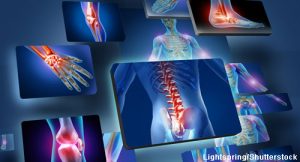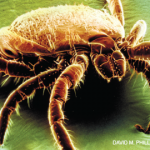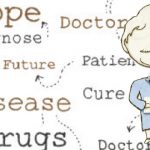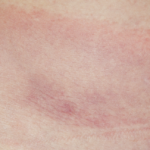 Many physicians conceptualize post-treatment Lyme disease as similar to fibromyalgia, with a uniform phenotype and subjective symptoms, many of which overlap with depression. However, individuals with post-treatment Lyme disease are heterogenous, with a wide range of clinical symptoms, many of which can significantly affect quality of life. Previous studies have used validated symptom questionnaires to evaluate this patient population, finding a wide range of symptoms, including musculoskeletal pain, which is relatively common in the general population, is reported with greater frequency and severity in patients with post-treatment Lyme disease.
Many physicians conceptualize post-treatment Lyme disease as similar to fibromyalgia, with a uniform phenotype and subjective symptoms, many of which overlap with depression. However, individuals with post-treatment Lyme disease are heterogenous, with a wide range of clinical symptoms, many of which can significantly affect quality of life. Previous studies have used validated symptom questionnaires to evaluate this patient population, finding a wide range of symptoms, including musculoskeletal pain, which is relatively common in the general population, is reported with greater frequency and severity in patients with post-treatment Lyme disease.
Results from a study that identified and characterized potentially clinically relevant patient subgroups in post-treatment Lyme disease suggest patients with well-characterized, post-treatment Lyme disease can be categorized into three clinically relevant subgroups: 1) low to moderate level of fatigue and impaired cognitive function, musculoskeletal pain and mood-related symptoms, 2) high levels of musculoskeletal pain and 3) high levels of mood-related symptoms.
Alison W. Rebman, MPH, senior research data analyst at the Johns Hopkins University School of Medicine, Baltimore, and colleagues report these subgroups differ by symptom phenotype, as well as a range of other factors. They published their findings online Jan. 13 in BMJ Open.1
“It’s not a uniform population,” says John N. Aucott, MD, director of the Johns Hopkins Lyme Disease Clinical Research Center and senior author of the study. He explains that there is a tendency for physicians to believe that all of the symptoms of post-treatment Lyme disease stem from anxiety and depression. However, he and his colleagues found that, although some patients meet this description, many experience a syndrome characterized primarily by musculoskeletal symptoms.
Methods
The researchers enrolled 212 patients (average age 48 years) whose current illness was clearly linked to B. burgdorferi exposure. Participants self-administered a 36-item, post-Lyme questionnaire of symptoms (PLQS) and, for each symptom, indicated its presence and severity over the previous two weeks.
The investigators performed exploratory factor analysis on the data and classified the self-reported symptoms into six groups: fatigue, ocular disequilibrium, infection type, mood related, musculoskeletal pain and neurologic. They used the overall severity of the symptom reporting to identify three patient subgroups: 59.0% of patients reported symptoms in subgroup 1, which was characterized primarily by low to moderate level of fatigue and impaired cognitive function, musculoskeletal pain and mood-related symptoms; 18.9% of patients reported symptoms in subgroup 2, which was characterized by high levels of musculoskeletal pain; and 22.2% of patients reported symptoms in subgroup 3, which was characterized by the highest levels of mood-related symptoms. Neither the percentage of men vs. women respondents nor the Life Events Checklist total score was statistically significantly different across subgroups.
Individuals in subgroup 1 reported lower rates of disability and higher self-efficacy relative to the other groups. Patients in subgroup 2 had higher blood pressure and a higher percentage of participants with an abnormal C reactive protein level than patients in subgroup 1. Individuals in subgroup 3 tended to be younger, have longer illness duration, were more likely to have received prior intravenous antibiotic treatment and tended to have prior neurologic pathology. Patients in subgroup 3 also reported higher levels of depression and migraine headaches than those in the other groups. Patients in subgroup 3 were less likely to report an annual household income of more than $100,000.
The authors conclude their paper by suggesting their results may provide a framework for thinking about the symptom heterogeneity of patients with post-treatment Lyme disease, as well as lead to more targeted interventions or novel treatment approaches that address the multiple factors contributing to continued illness in patients with post-treatment Lyme disease.
“Rheumatologists are going to get [post-Lyme patients] referred to them because they all have musculoskeletal symptoms,” says Dr. Aucott. He suggests rheumatologists pay careful attention to those patients who have musculoskeletal symptoms with low mood-related symptoms in (subgroup 2) because these patients may be at risk of developing inflammatory arthritis and will most likely respond to medications used to treat reactive arthritis and spondyloarthritis.2 In contrast, patients in subgroup 3 may be more likely to respond to medications that affect both pain- and mood-related symptoms.
Dr. Aucott describes this area of research as an evolving story and notes that his research center is discovering that some of patients in subgroup 2 have enthesitis. “These patients will likely respond to the therapies that rheumatologists know how to prescribe,” says Dr. Aucott. His laboratory is currently investigating whether B. burgdorferi may be triggering an inflammatory process that results in musculoskeletal conditions in these patients.
Lara C. Pullen, PhD, is a medical writer based in the Chicago area.
Reference
- Rebman AW, Yang T, Aucott JN. Symptom heterogeneity and patient subgroup classification among US patients with post-treatment Lyme disease: An observational study. BMJ Open. 2021 Jan 13;11(1):e040399.
- Arvikar SL, Crowley JT, , Sulka KB, et al. Autoimmune arthritides, rheumatoid arthritis, psoriatic arthritis, or peripheral spondyloarthritis following Lyme disease. Arthritis Rheumatol. 2017 Jan;69(1):194–202.



